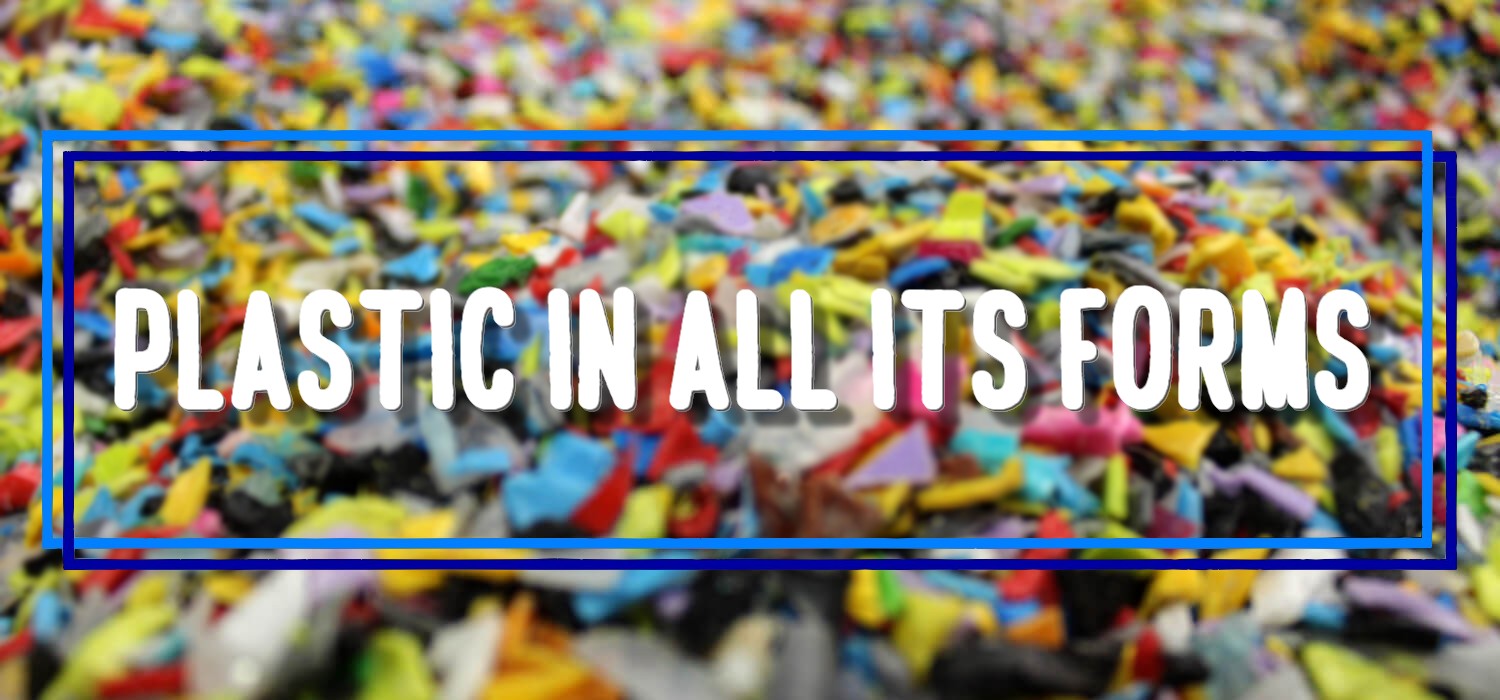
Posted on July 31th, 2022 by Nathan Lioret
In this article, we will see more precisely what plastic is, how it is made and in what forms it is most commonly found. Indeed, our project essentially concerns the recycling of plastic wastes, and this recycling is not carried out in the same way depending on the type of plastic with which we are dealing. This is why it was essential for us to learn more about the most common plastics and how to recognize them.
What is a plastic ?
Above all, how do we obtain this material that is essential to our modern societies ? The term “plastic materials” refers to polymers, an ordered set of monomers obtained by the cracking (heating then sudden cooling) of naphtha, a liquid resulting from petroleum refining. These monomers are then brought together to form macromolecular chains, i.e. molecules of a sufficient size to be visible by human eye, this is a polymer, which generally takes the form of a little ball (granule) that we will be able to shape afterwards. This polymerization is carried out by using additives (reagents and catalysts) as well as by acting on the temperature and the pressure applied to the monomers. [1] Then comes the last step, shaping, which consists of transforming these plastic flakes into objects. For this, many methods exist, to name only the main ones, here are some examples [2]:
- Injection molding : the plastic flakes are heated and softened before being sent under pressure into a closed mold using an injection molding machine. This mold gives the shape of the part that will be obtained once cooled. This process is used for objects of all sizes, from plastic bottle caps to garden tables.
- Injection-blow molding : by combining the principle of injection molding with an air jet allowing the injected plastic to be pressed against the walls of the mould, we obtain the plastic bottles that we know only too well. This is the principle of injection-blow molding.
- Extrusion : consists in compressing the softened plastic flakes through a mold which will give it the desired shape, whether it is a simple wire, a hollow tube (PVC pipes), complex shapes… We can compare this method to the one used to make churros. Variants exist, such as extrusion-blow molding and extrusion-inflation.
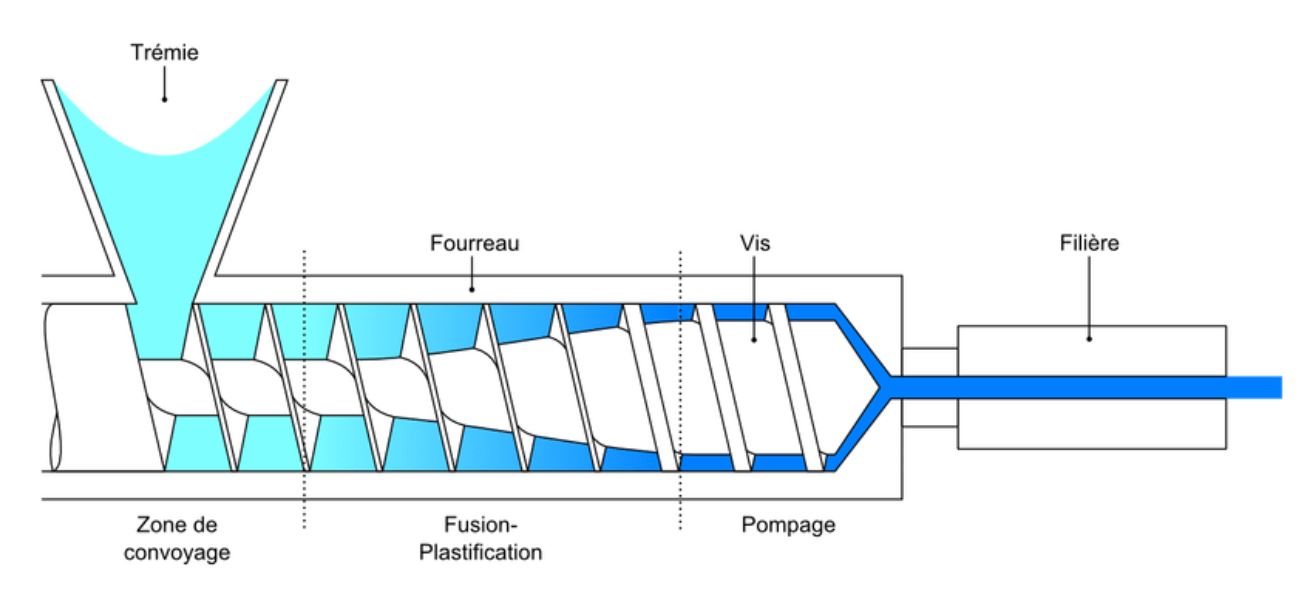
- Rotational molding : consists in rotating a mold filled with liquefied plastic on itself, then cooling it to obtain the desired shape.
- Thermoforming : a plastic sheet is softened (it is rolled up if the thickness is small, which is the most common) by heating it before compressing it between two molds which gives it its final shape.
- Rolling : makes it possible to obtain plates or plastic film by passing the material between two rotating cylinders more or less far from one another (rolling mills).
All the same plastics ?
That would be too easy !
We can already start by differentiating plastics into 2 main categories : thermoplastics and thermosets. Thermoplastics can be remelted indefinitely, which makes them very suitable for recycling, unlike thermosets, which cannot be remelted and are very difficult, if not impossible, to recycle [3]. Fortunately, 80% of the plastic produced in the world are thermoplastics. Also, the methods described above for shaping plastic essentially concern thermoplastics, thermosets being manufactured with more complex methods.
Thermoplastics are once again subdivided into 7 categories, whose properties differ and which are not recycled in the same way, as we will see in a future article [4,5] :
- Polyethylene Terephthalate (PET) :
- Properties : light, rigid or semi-rigid, transparent or semi-opaque
- Advantages : light, solid (impact resistant), impermeable to oxides (CO2) and water, good electrical properties, long service life
- Disadvantages : high shrinkage during molding, degrades when heated
- Hazards : toxic fumes
- Typical uses : all plastic bottles, food packaging, credit and loyalty cards, stuffed animals and cushions, combs, certain bags, carpets, ropes, etc.
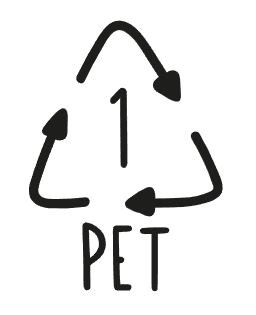
- High Density Polyethylene (HDPE) :
- Properties : soft and flexible, high tensile strength, translucent, waxy texture, inert
- Advantages : thermally stable (resistant to both cold and heat), cheap, good chemical resistance, good electrical properties, resistance to friction
- Disadvantages : poor resistance to oxidizing agents, less rigid than PP, easy to burn, low UV resistance, high molding shrinkage
- Dangers : no danger to burn it in itself but the additives can present some
- Typical uses : pipes, toys, bowls, plastic crates, packaging film, household products, milk bottles, shampoo and medicine bottles, pop caps
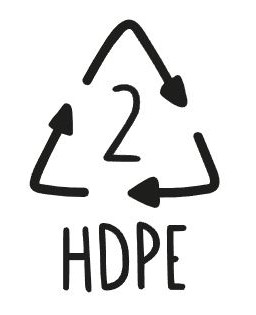
- Polyvinyl chloride (PVC) :
- Properties : insulating, chemically inert, rigid or flexible, opaque or transparent, non-slip or smooth
- Advantages : easy to maintain, cheap, resistant to water, fire, acid and alkali
- Disadvantages : degradation by overheating, brittle below 0°C, discolors if exposed to too much UV, high density
- Dangers : generates HCL and dioxins when burned (very toxic)
- Typical uses : Rigid = plumbing pipes, building materials, soles, heat shrink tubing, kitchen utensil handles, patio furniture; soft = cheese and meat wraps, tape, faux leather, gasket, cable sheath, diaper
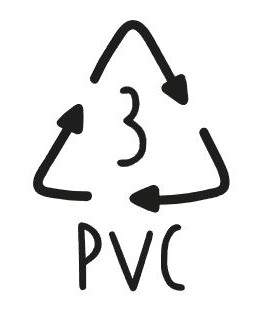
- Low Density Polyethylene (LDPE) :
- Properties : chemically inert, flexible, translucent, insulating
- Advantages : inexpensive, cold-resistant, resistant to chemicals and hydrolysis, good impact resistance, easy to manufacture
- Disadvantages : low tensile strength, not very rigid, poor heat resistance, burns easily, poor UV resistance, high molding shrinkage
- Dangers : no danger to burn it in itself but the additives can present some
- Typical uses : alimentary film, garbage bags, plastic bags, milk bottle caps, ice cube bags, leaves, plastic bowls, pipes, etc.
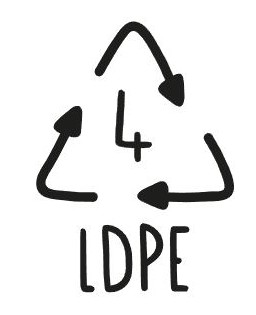
- Polypropylene(PP) :
- Properties : translucent to opaque, hard to semi-rigid, hydrophobic
- Advantages : resistant to high and low temperatures, very rigid, very strong, very resistant to abrasion, good mechanical, thermal and electrical properties
- Disadvantages : more expensive than PE, brittle below 0°C, high gas permeability, low resistance to fuels, low UV resistance, continues to burn
- Dangers : no danger to burn it in itself but the additives can present some
- Typical uses : construction plastic, pipes, toys, plastic chairs, kitchen utensils (children’s dishes, microwaveable dishes, drinking straws), butter wrappers, synthetic mats, DVD box, ropes, nets
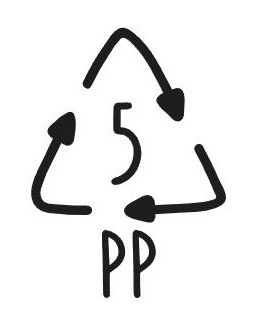
- Polystyrene (PS) :
- Properties : hard, rigid, opaque or transparent, shiny
- Advantages : cheap, low molding shrinkage, good insulation, good at low temperatures
- Disadvantages : brittle, low wear resistance, low chemical resistance
- Dangers : releases styrene when burned (toxic)
- Typical uses : toys, CD boxes, light diffusers, electrical boxes, cutlery, school materials (square, ruler, protractor), pot of yogurt and fresh cream, styrofoam meat tray
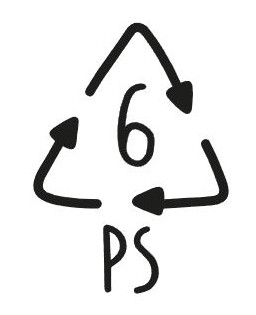
- Others (OTHER) :
- Properties : vary a lot from one plastic to another
- Advantages : very interesting plastics in this category (ABS, PLA, Nylon)
- Disadvantages : difficult to identify
- Dangers : difficult to find the melting temperature, we usually end up burning them, so not very safe (some of these plastics give off very harmful fumes, like PC)
- Typical uses : PC = CD & DVD; PLA = bioplastics; ABS = filament from 3D printers, toys, electronic products; PMMA = acrylic glass; carboys for water cooler, reusable bottles, baby bottles
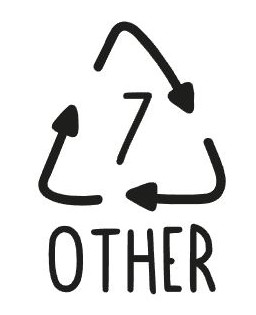
Sources
[5] https://community.preciousplastic.com/academy/plastic/basics





